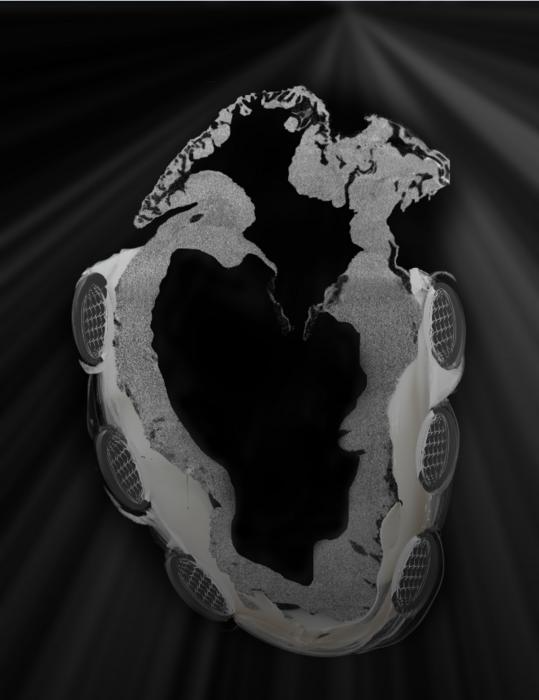Researchers developed a biorobotic heart that beats like a genuine one by fusing a biological heart with a silicone robotic pump. They concentrated on a valve on the left side of the heart. The heart valve simulator, which was introduced on January 10th, 2023 in the journal Device, can replicate the form, operation, and movement of a normal or diseased heart. This enables researchers and surgeons to show different procedures while gathering data in real-time.
 Scientists crafted a biorobotic heart simulator by replacing the heart muscle of a biological heart’s left chamber with a soft robotic pump. Image Credit: Manisha Singh
Scientists crafted a biorobotic heart simulator by replacing the heart muscle of a biological heart’s left chamber with a soft robotic pump. Image Credit: Manisha Singh
The simulator has a huge benefit as a research tool for those who study different heart valve conditions and interventions. It can serve as a surgical training platform for clinicians, medical students, and trainees, allow device engineers to study their new designs, and even help patients better understand their own disease and potential treatments.
Ellen Roche, Study Senior Author and Biomedical Engineer, Massachusetts Institute of Technology
Novel therapies are rigorously tested in animal models and cardiac simulators before being made available to humans. Nevertheless, the two to four hour shelf life of existing cardiac simulators prevents them from accurately simulating the intricacy of the human heart.
Research on animals may be costly and time-consuming, and results might not be relevant to people. These voids can be filled by the biorobotic heart, which is a less costly technique with a few months shelf life.
The condition known as mitral regurgitation, in which the valve between the left and right heart chambers malfunctions and allows blood to flow backward via a leaky heart valve, was the subject of the study. The disease, which affects over 24.2 million individuals globally, can result in heart failure, limb edema, and dyspnea.
The complexity of the valve’s construction makes surgery to treat the condition very difficult, emphasizing the necessity for precise surgical procedures and efficient technologies.
Based on a pig heart, the researchers created a biorobotic heart to gain a better understanding of the mitral valve in both healthy and pathological conditions. The researchers used a soft robotic pump system made of silicone that is powered by air to replace the left chamber heart muscle.
When the device is inflated, it pumps fake blood via a fictitious circulatory system and mimics the beat of a biological heart by twisting and compressing the heart like genuine heart muscle.
The biorobotic heart displayed signs of a leaking heart valve after the scientists injured the mitral valve. The scientists then employed three distinct approaches to repair the damage: implanting a device to aid in valve leaflet closure, replacing the valve with a prosthetic valve, and attaching the flailing valve leaflet tissue with artificial cables.
All three treatments were effective in restoring normal pressure, flow, and cardiac function. The device also allowed the study team to collect data in real-time during surgery, and it is compatible with existing imaging technologies used in clinics. Because the artificial blood utilized in the device is transparent, the operation can be seen directly. The results established the device as a novel cardiac model.
Roche added, “It was really interesting for the surgeons to see every step. When you are working with patients, you can’t visualize the process because there is blood in the heart.”
She envisions their heart model as a realistic training and practice setting for cardiac surgery.
The team’s next goal is to improve the current biorobotic heart system by reducing production time and increasing shelf life. Instead of a pig heart, they are looking into 3D printing to develop a synthetic human heart for the system.
Roche further added, “Our biorobotic heart may help improve the device design cycle, allow rapid iterations, get things approved by regulatory bodies, and launch them into the market quickly. Expediting and improving these processes will ultimately benefit patients.”
The National Science Foundation, the Philips/MIT award, and the MathWorks Fellowship all provided funding for this research.
Journal Reference:
Park, C., et. al. (2023) Biorobotic hybrid heart as a benchtop cardiac mitral valve simulator. Device. doi:10.1016/j.device.2023.100217